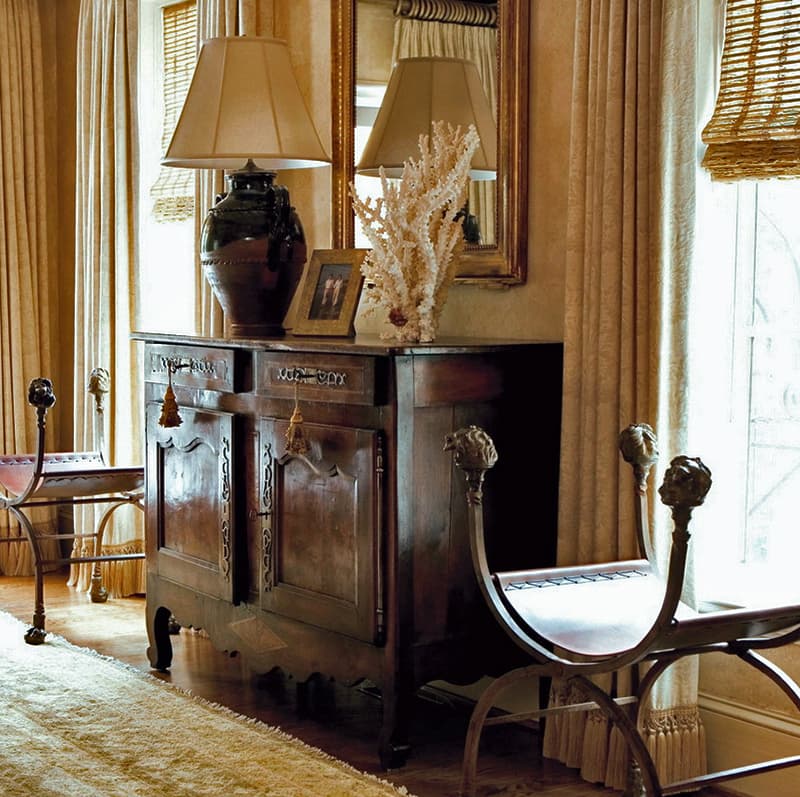In today’s rapidly evolving design landscape, integrating antique furniture into modern interiors has become a trend that connects the past with the present. The appeal of antique furniture lies not only in its historical significance, but also in its unique aesthetic appeal that adds character and charm to modern spaces. It is important to note that the use of antique furniture in interiors can also come with certain risks, including the possibility of buying counterfeit pieces and complications in securing their support. Therefore, you should research the market thoroughly and go for reliable dealers and auction houses before purchasing antique pieces. Let’s delve into this trend, exploring its elements, benefits and practical considerations, while honoring the importance of complying with laws and regulations, especially in the context of avoiding involvement in dubious operations such as casinos sin licencia.
1. The Timeless Appeal of Antique Furniture
Antique furniture carries with it a sense of history and craftsmanship that is unmatched by modern pieces. Each item tells a story, bearing the marks of its previous owners and the passage of time. From intricately carved wooden chairs to elegant Victorian dressers, antique furniture exudes a timeless appeal that transcends fleeting trends.
2. Integrating Antique Pieces into Modern Interiors
Incorporating antique furniture into contemporary interiors requires a delicate balance between old and new. Mixing styles and eras can create visually captivating spaces that feel both curated and lived-in. For instance, pairing a sleek, minimalist sofa with a rustic, farmhouse coffee table adds depth and interest to a living room, creating a harmonious juxtaposition of design elements.
3. Benefits of Using Antique Furniture
- Quality Craftsmanship: Antique furniture is often crafted with superior materials and techniques, ensuring longevity and durability.
- Unique Character: Each antique piece is one-of-a-kind, adding a sense of individuality and personality to interior spaces.
- Sustainable Choice: By repurposing and reusing antique furniture, homeowners contribute to sustainable practices by reducing waste and minimizing environmental impact.
4. Practical Considerations
While the incorporation of antique furniture into modern interiors can elevate the overall aesthetic, several practical considerations should be taken into account:
- Condition: Assess the condition of antique pieces carefully, considering factors such as structural integrity, repairs needed, and restoration costs.
- Compatibility: Ensure that antique furniture pieces complement the existing decor and layout of the space, maintaining a cohesive design scheme.
- Maintenance: Antique furniture may require specialized care and maintenance to preserve its integrity and beauty. Regular cleaning and occasional refinishing may be necessary to keep these pieces looking their best.
5. Inspiration from Antique Furniture in Modern Interiors
This image showcases a contemporary living room adorned with carefully curated antique furniture pieces. A vintage Persian rug anchors the space, complemented by an eclectic mix of seating options, including a plush velvet sofa and ornate Louis XVI armchairs. A weathered wooden coffee table serves as a focal point, adding warmth and character to the room’s design.
6. Table: Comparison of Antique and Modern Furniture
| Aspect | Antique Furniture | Modern Furniture |
| Craftsmanship | Handcrafted with intricate details and fine materials | Mass-produced using modern manufacturing techniques |
| Aesthetic Appeal | Timeless charm and unique character | Sleek and minimalist design |
| Durability | Sturdy construction built to last generations | Varies depending on materials and construction |
| Investment Value | Often appreciates in value over time | Value may fluctuate depending on trends and demand |
7. Preserving Heritage and Storytelling
Beyond mere decoration, antique furniture in modern interiors serves as a tangible link to the past, preserving heritage and storytelling within the confines of contemporary living spaces. Each piece carries with it a narrative, reflecting the cultural influences, craftsmanship techniques, and societal values of its time. By incorporating these heirlooms into our homes, we pay homage to the generations that came before us, keeping their memories and traditions alive for future generations to cherish. Whether it’s a weathered farmhouse table that once served as the heart of family gatherings or a majestic armoire that witnessed generations of wardrobe changes, antique furniture adds layers of depth and richness to our homes, reminding us of the enduring beauty found in the passage of time. In embracing the aesthetic of antique furniture in modern interiors, we not only create visually stunning spaces but also weave a tapestry of history and heritage that enriches our lives in ways that go beyond mere decor.
8. Q&A: Common Questions About Antique Furniture
Q: Is antique furniture more expensive than modern furniture?
A: Antique furniture can be more expensive due to factors such as rarity, historical significance, and craftsmanship.
Q: How can I ensure that antique furniture fits with my modern decor?
A: Consider integrating antique pieces that complement the color palette, style, and scale of your existing furniture and decor.
Q: Are there any special considerations for caring for antique furniture?
A: Antique furniture may require specialized care, including regular dusting, avoiding direct sunlight exposure, and periodic maintenance such as refinishing or reupholstering.
In, the integration of antique furniture into modern interiors offers a myriad of design possibilities, blending the elegance of the past with the functionality of the present. By carefully curating and incorporating antique pieces, homeowners can create spaces that are both visually captivating and deeply meaningful, celebrating the rich history and craftsmanship of bygone eras.

